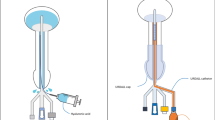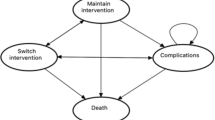Abstract
Study design:
Retrospective investigation.
Objectives:
To investigate the occurrence, characteristics and clinical consequences of urethral strictures in men with neurogenic lower urinary tract dysfunction (NLUTD) using intermittent catheterization (IC) for bladder evacuation.
Setting:
Spinal cord injury rehabilitation center.
Methods:
The patient database was screened for men with NLUTD who had presented for a routine video-urodynamic investigation between 2008 and 2012. Patient characteristics, bladder diary details, the occurrence of urethral strictures and performed urethrotomy procedures were collected from patient charts. Urethral strictures were classified using the Wiegand scoring system modified for men with NLUTD.
Results:
The occurrence rate of urethral strictures (that is, 25% confidence interval (CI) 21–30%) was significantly (P=0.0001) higher in men using IC (n=415) than in men using other bladder evacuation methods (that is, 14% CI 11–17%) (n=629). Urethral strictures had occurred after a median 5.9 years (range 0.5–48.9 years) of IC. There was no significant (P>0.08) effect of tetraplegia or catheter type on the stricture occurrence rate. Approximately one-third of the men suffering from urethral strictures underwent internal urethrotomies. The radiographic stricture severity score was not associated with the need for surgical correction of the stricture. The radiographic recurrence rate of urethral strictures in operated men was 100%, a median 14 years after the first urethrotomy.
Conclusions:
The occurrence rate of urethral strictures is significantly higher in men using IC than in men using other bladder evacuation methods. Every fourth men using IC may be affected by urethral strictures. However, only every third stricture may require a surgical intervention.
Similar content being viewed by others
Log in or create a free account to read this content
Gain free access to this article, as well as selected content from this journal and more on nature.com
or
References
Stohrer M, Blok B, Castro-Diaz D, Chartier-Kastler E, Del Popolo G, Kramer G et al. EAU guidelines on neurogenic lower urinary tract dysfunction. Eur Urol 2009; 56: 81–88.
Krebs J, Bartel P, Pannek J . Residual urine volumes after intermittent catheterization in men with spinal cord injury. Spinal Cord 2013; 51: 776–779.
Domurath B, Kutzenberger J, Kurze I, Knoth HS . Clinical evaluation of a newly developed catheter (SpeediCath Compact Male) in men with spinal cord injury: residual urine and user evaluation. Spinal Cord 2011; 49: 817–821.
Wyndaele JJ . Complications of intermittent catheterization: their prevention and treatment. Spinal Cord 2002; 40: 536–541.
Webb RJ, Lawson AL, Neal DE . Clean intermittent self-catheterisation in 172 adults. Br J Urol 1990; 65: 20–23.
Chung JH, Kang DH, Choi HY, Jeong TY, Ha US, Han JH et al. The effects of hyaluronic acid and carboxymethylcellulose in preventing recurrence of urethral stricture after endoscopic internal urethrotomy: a multicenter, randomized controlled, single-blinded study. J Endourol 2013; 27: 756–762.
Perrouin-Verbe B, Labat JJ, Richard I, Mauduyt de la Greve I, Buzelin JM, Mathe JF . Clean intermittent catheterisation from the acute period in spinal cord injury patients. Long term evaluation of urethral and genital tolerance. Paraplegia 1995; 33: 619–624.
Wyndaele JJ, Maes D . Clean intermittent self-catheterization: a 12-year follow-up. J Urol 1990; 143: 906–908.
Maynard FM, Glass J . Management of the neuropathic bladder by clean intermittent catheterisation: 5 year outcomes. Paraplegia 1987; 25: 106–110.
Guenther M, Loechner-Ernst D, Kramer G, Stoehrer M . Auswirkungen des aseptischen intermittierenden Katheterismus auf die männliche Harnröhre. Urologe B 2001; 41: 359–361.
Singh R, Rohilla RK, Sangwan K, Siwach R, Magu NK, Sangwan SS . Bladder management methods and urological complications in spinal cord injury patients. Indian J Orthop 2011; 45: 141–147.
Vaidyanathan S, Soni BM, Dundas S, Krishnan KR . Urethral cytology in spinal cord injury patients performing intermittent catheterisation. Paraplegia 1994; 32: 493–500.
Chartier-Kastler E, Denys P . Intermittent catheterization with hydrophilic catheters as a treatment of chronic neurogenic urinary retention. Neurourol Urodyn 2011; 30: 21–31.
Wiegand LR, Brandes SB . The UREThRAL stricture score: a novel method for describing anterior urethral strictures. Can Urol Assoc J 2011; 6: 260–264.
Kriz J, Relichova Z . Intermittent self-catheterization in tetraplegic patients: a 6-year experience gained in the spinal cord unit in Prague. Spinal Cord 2014; 52: 163–166.
Bermingham SL, Hodgkinson S, Wright S, Hayter E, Spinks J, Pellowe C . Intermittent self catheterisation with hydrophilic, gel reservoir, and non-coated catheters: a systematic review and cost effectiveness analysis. BMJ 2013; 346: e8639.
Santucci R, Eisenberg L . Urethrotomy has a much lower success rate than previously reported. J Urol 2010; 183: 1859–1862.
Naude AM, Heyns CF . What is the place of internal urethrotomy in the treatment of urethral stricture disease? Nat Clin Pract Urol 2005; 2: 538–545.
Afsar SI, Yemisci OU, Cosar SN, Cetin N . Compliance with clean intermittent catheterization in spinal cord injury patients: a long-term follow-up study. Spinal Cord 2013; 51: 645–649.
Author information
Authors and Affiliations
Corresponding author
Ethics declarations
Competing interests
The authors declare no conflict of interest.
Rights and permissions
About this article
Cite this article
Krebs, J., Wöllner, J. & Pannek, J. Urethral strictures in men with neurogenic lower urinary tract dysfunction using intermittent catheterization for bladder evacuation. Spinal Cord 53, 310–313 (2015). https://doi.org/10.1038/sc.2015.15
Received:
Revised:
Accepted:
Published:
Issue date:
DOI: https://doi.org/10.1038/sc.2015.15
This article is cited by
-
A cost-effectiveness analysis of bladder management strategies in neurogenic lower urinary tract dysfunction after spinal cord injury: A publicly funded health care perspective
Spinal Cord (2023)
-
Classification systems for anterior urethral stricture disease in men: a systematic review
World Journal of Urology (2021)
-
Surveillance and management of urologic complications after spinal cord injury
World Journal of Urology (2018)
-
Urethral Stricture in the Spinal Cord Injured Patient—What Are the Unique Considerations?
Current Bladder Dysfunction Reports (2016)



